This is the best easy scone recipe, fluffy, buttery, ultra soft scones that turn out every time. Turn up the flavor by adding lavender and orange!
Growing up, the only kind of scones we ever had were a sweet yeast bread that was rolled flat and fried. Usually served with honey butter and powdered sugar, I think it originated as a County Fair tradition? Who knows. I was introduced to “English” scones when I got my first cookbook, The America’s Test Kitchen Show Cookbook {linked to most current version} and I was instantly hooked. They are like a dreamy mix between a biscuit, a shortbread, breakfast, and dessert. This really is an easy scone recipe and the orange and lavender have been my favorite variation for a long time!
Why You’ll Love These Orange Scones
This easy scone recipe is the best because it is SO easy to make and the scones come out perfect every time. They have a lighter texture than a biscuit, are slightly sweet, and so soft they basically melt in your mouth.
What does a scone taste like?
Scones are usually not very sweet, and the sweetness level can vary depending on the type and amount of ingredients used. Some scones can be savory and may contain cheese, herbs, or vegetables.
Orange Scone with Lavender Ingredients
- All-Purpose flour
- Sugar
- Baking powder
- Salt
- Butter
- Orange zest
- Fresh lavender
- Heavy cream
What type of flour is best for scones?
All-purpose flour is best for these scones.
Orange Scone Recipe Substitutions
Now, before you run away because you don’t have fresh lavender, you can substitute rosemary or thyme and have them be equally as amazing. I give specific measurements in the notes section of the recipe card. And, as always, dried is great too!
Lavender is similar to rosemary, but I prefer it in this recipe because it is more of a subtle flavor. I like the balance the orange and lavender have, and it’s more of a unique flavor combination!
Is buttermilk or heavy cream better for scones?
The scones are made with cream, and I don’t recommend substituting it for half and half or buttermilk. The high-fat content in the cream is part of what gives the scones their soft but light texture. But, if you must substitute, leave a comment and let me know how it went!
How to make Orange Scones with Lavender
- Preheat oven to 425 degrees F.
- Sift together flour, sugar, baking powder, and salt.
- Cut cold butter into the flour until it is about the size of a pea.
- Stir in orange zest and lavender.
- Add cream slowly, mixing as you pour, until the dough just starts to come together. It will be crumbly.
- Gently knead together with your hands, being careful not to over work the dough or handle it more than necessary.
- Form it into a rectangle that is about 12 inches long and 4 inches wide.
- For larger scones: cut the rectangle into 3 equal pieces, and then cut each of the 3 pieces in half diagonally.
- For smaller scones: cut the rectangle into 4 equal pieces, and then cut each of the 4 pieces in half diagonally.
- Place on a lined or sprayed cookie sheet and bake in a preheated oven for 10-12 minutes, until the edges just start to turn golden brown.
- Let cool.
Orange Scones Recipe Tips
- Don’t over mix: Mix the dough until it just comes together.
- Don’t over-hydrate: The dough should be dry and crumbly, not wet and sticky.
- Don’t over bake: Bake until the scones are just golden brown and don’t look wet on the top.
- As with pie crust, you cut the butter into the dry ingredients and then slowly add the cream until it just comes together. I wanted to make a video to go with this post so you could see the texture of the dough through the different stages and how crumbly it is when it is ready. Don’t add too much cream, otherwise, your scones will lose that amazing texture.
How to serve this Lavender Scones Recipe
You can serve these scones any way you want. They make a great stand-alone breakfast, a great snack, or even a sweet dessert.
Orange Scone Storage
Orange scones can be stored at room temperature in an airtight container.
Orange Lavender Scones FAQs
What is the secret to making good scones?
The best sectret for scones is to not overmix them. The dough should be kneaded until it just comes together and not overworked. This will ensure you have soft and tender scones.
Are scones Irish or Scottish?
Scones are a type of baked good that originated in Scotland, but they are also commonly associated with Ireland and England. Scones are believed to have been first made in Scotland in the 1500s, where they were a simple, rustic bread made from oats and baked on a griddle.
Are scones English or British?
Scones originated in Scotland, but they became popular in England in the 19th century, when they were served as part of a traditional afternoon tea. Since then, scones have become a popular baked good in many parts of the UK, and they are often served with jam and cream as a sweet snack or dessert.
What is the difference between a scone and a biscuit?
While scones and biscuits share some similarities, they are two distinct types of baked goods with different ingredients, textures, and flavors.
PIN this recipe on your Breakfast board to SAVE it for later Follow Longbourn Farm on Pinterest for more great tips, ideas, and recipes!
[et_bloom_inline optin_id=”optin_2″]
Let me know if you try this recipe and what you thought! It’s one of my favorites.
Lavender Scones Recipe
Equipment
Ingredients
For the Scones
- 2 cups AP flour
- 3 tablespoons sugar
- 1 tablespoon baking powder
- 1/2 teaspoon salt
- 5 tablespoons butter cold, cubed
- Zest from 1 large orange or two small oranges about 1 tablespoon
- 3 teaspoons fresh lavender chopped, see note for substitutions
- 1 1/4 cups heavy cream you may not need to use it all, see step 5.
For the Glaze
- 1 cup powdered sugar
- Juice from 1 large orange or two small oranges about 1/4 - 1/3 cup
- 2 teaspoon vanilla
- Half and half enough to adjust consistency
Instructions
For the Scones
- Preheat oven to 425 degrees F.
- Sift together flour, sugar, baking powder, and salt.
- Cut cold butter into the flour until it is about the size of a pea.
- Stir in orange zest and lavender.
- Add cream slowly, mixing as you pour, until the dough just starts to come together. It will be crumbly.
- Gently knead together with your hands, being careful not to over work the dough or handle it more than necessary.
- Form it into a rectangle that is about 12 inches long and 4 inches wide.
- For larger scones: cut the rectangle into 3 equal pieces, and then cut each of the 3 pieces in half diagonally.
- For smaller scones: cut the rectangle into 4 equal pieces, and then cut each of the 4 pieces in half diagonally.
- Place on a lined or sprayed cookie sheet and bake in a preheated oven for 10-12 minutes, until the edges just start to turn golden brown.
- Let cool.
For the Glaze
- Combine powdered sugar, orange juice, and vanilla.
- The glaze should be pourable, if it needs thinning, add a half and half a teaspoon at a time until desired consistency is reached.
- Once scones are cooled, pour glaze evenly over each scone. Let set before packaging.
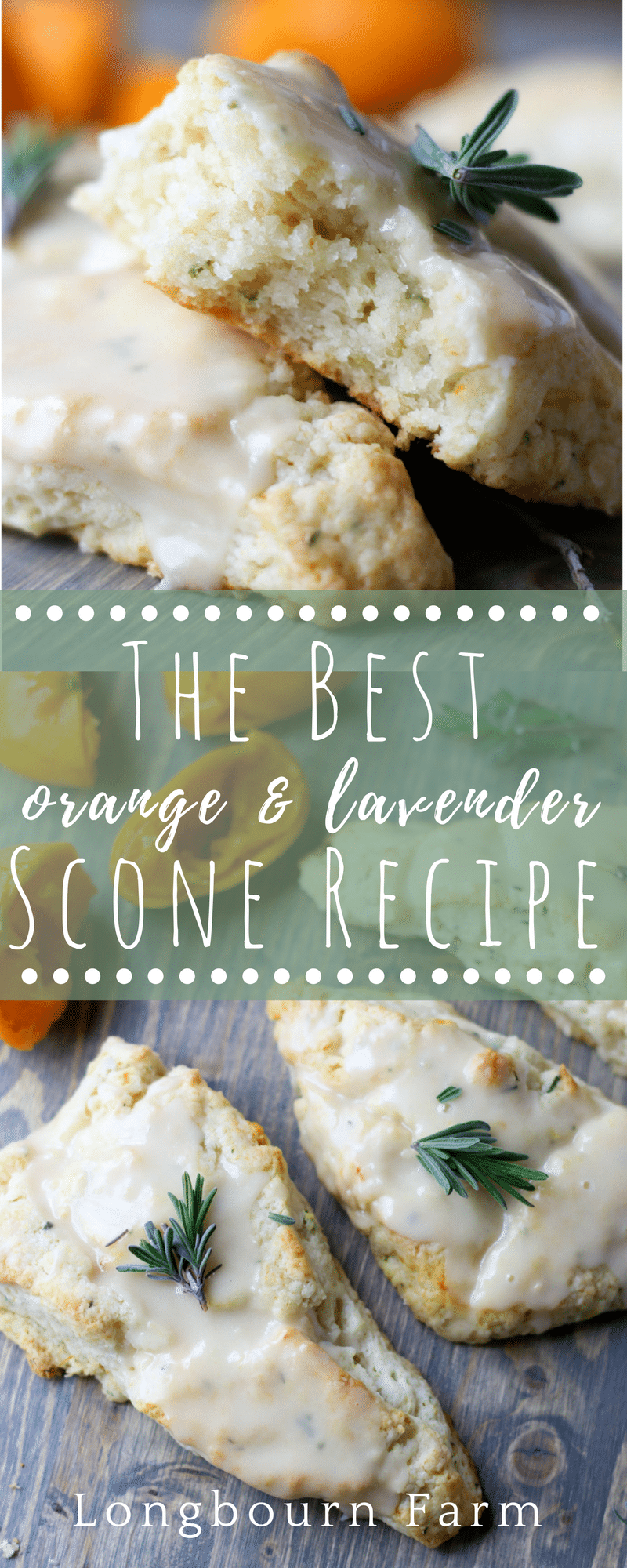
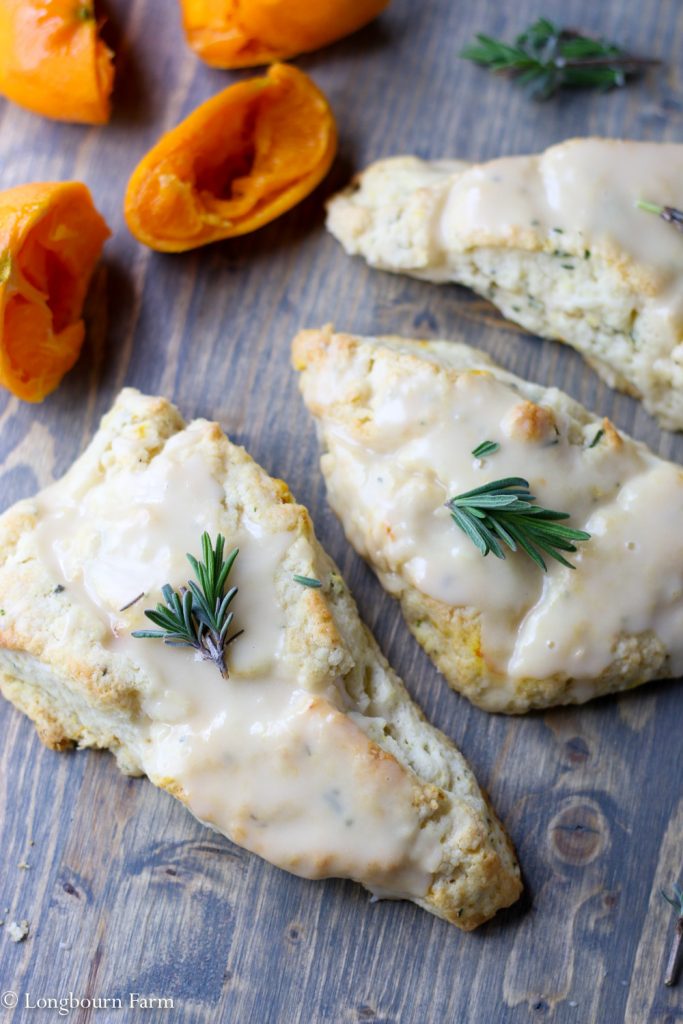
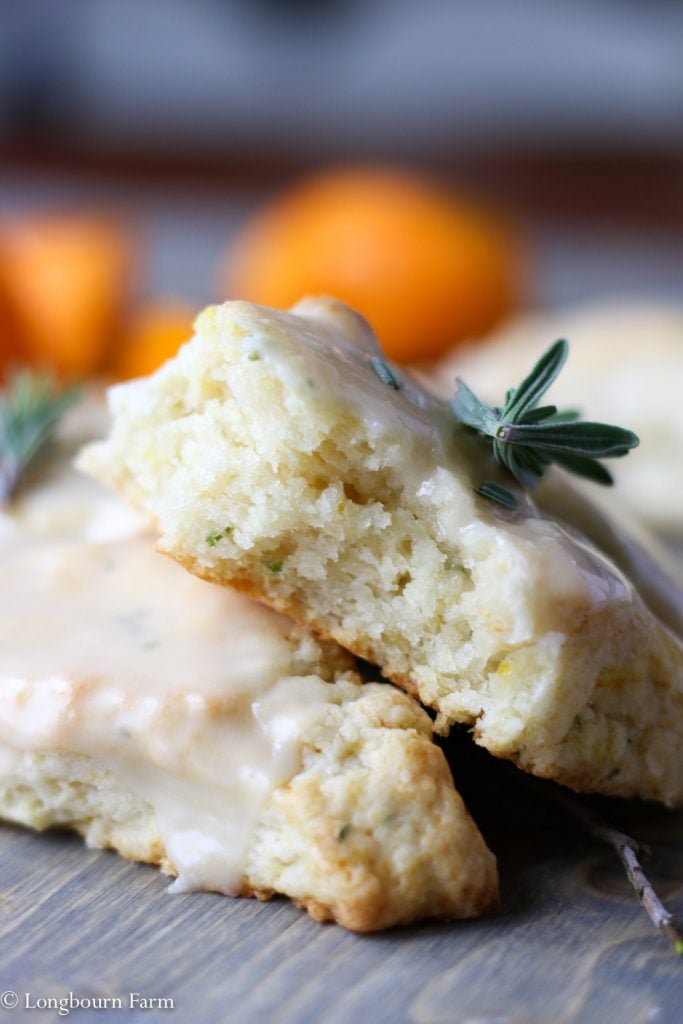
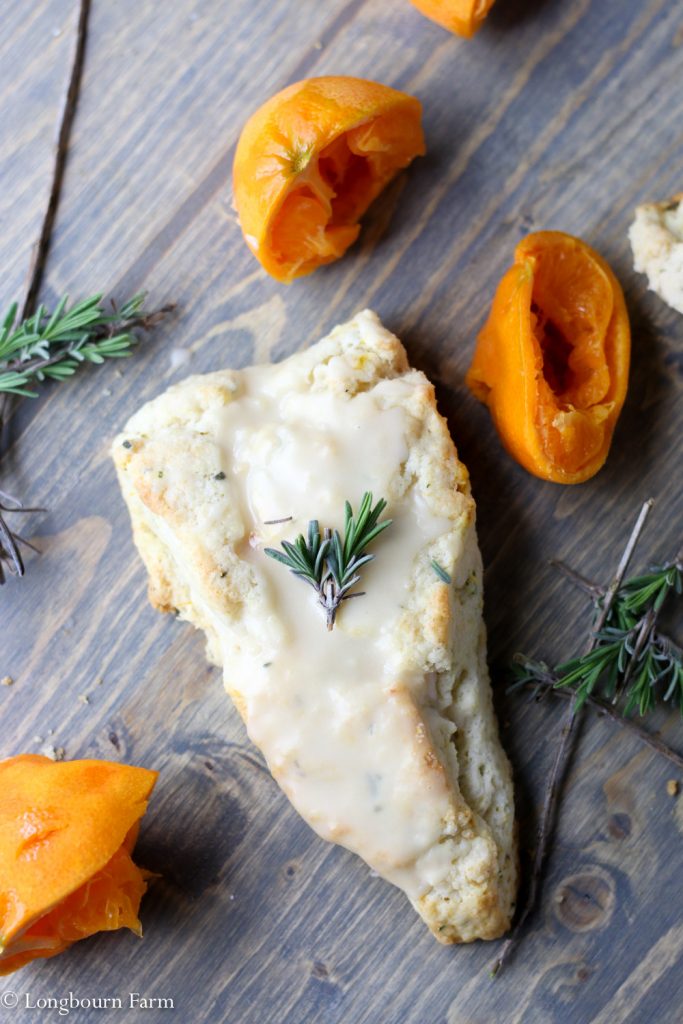
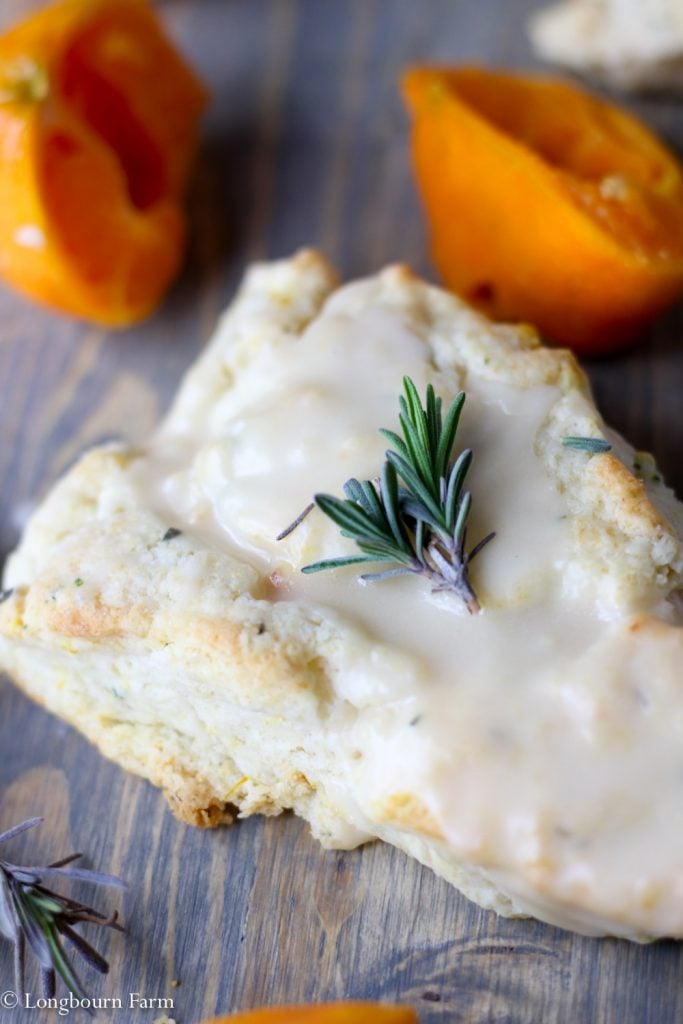
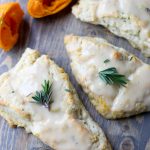
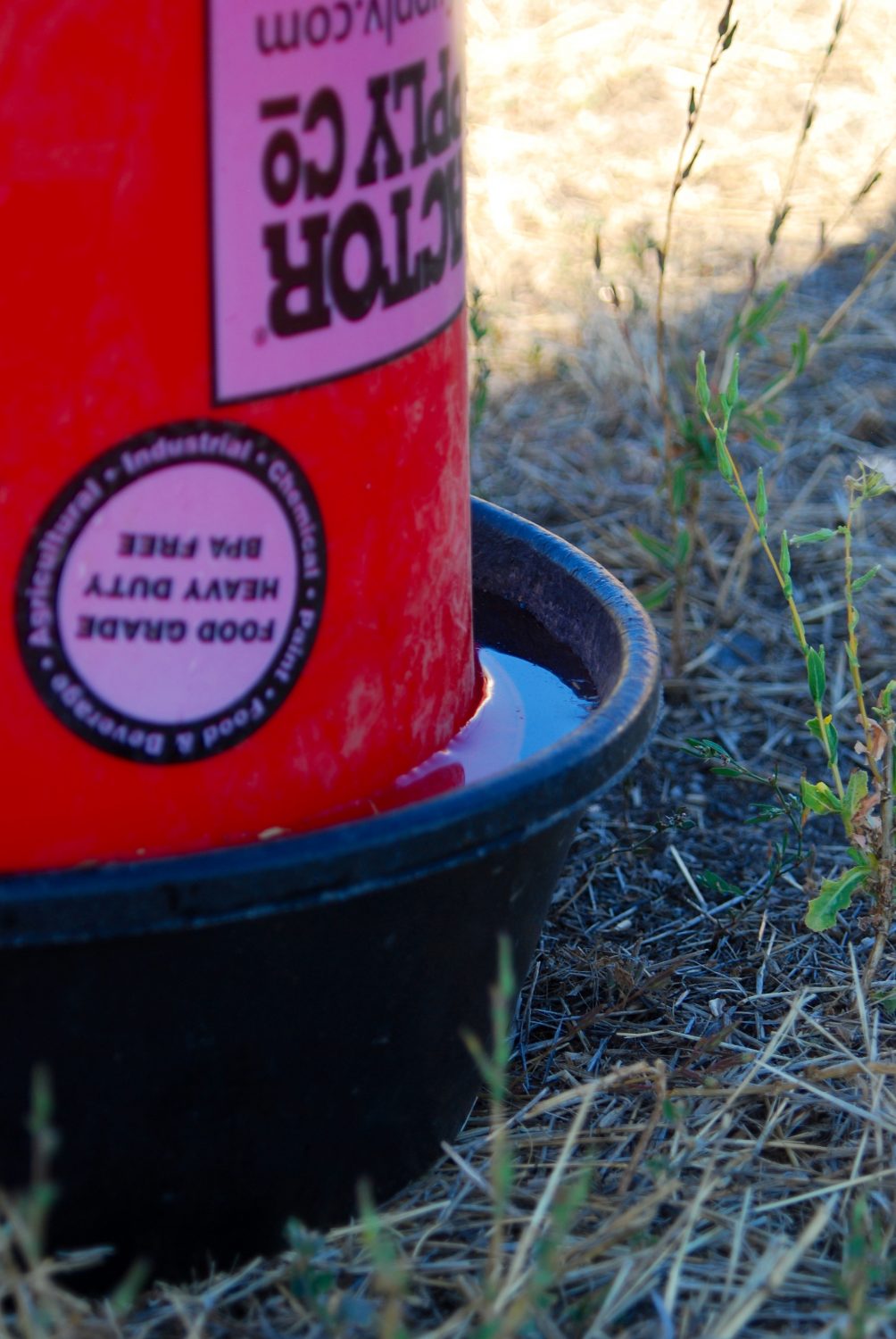




Alli says
Our favorite scone recipe.
cynthia says
Thank you for sharing the recipe. Am I clear that you use the green lavender leaves and not the flower? I have seen the dried buds in stores.
Alli says
Hi Cynthia! Yes, I use the leaves just as I would for any other herb. You can use the buds too but the majority of the aromatic oils that give the flavor are in the leaves 🙂
cynthia says
thank you so much. I have a huge lavender plant that I now know how to enjoy!
Alli says
That is awesome Cynthia!! Let me know what else you make with it!